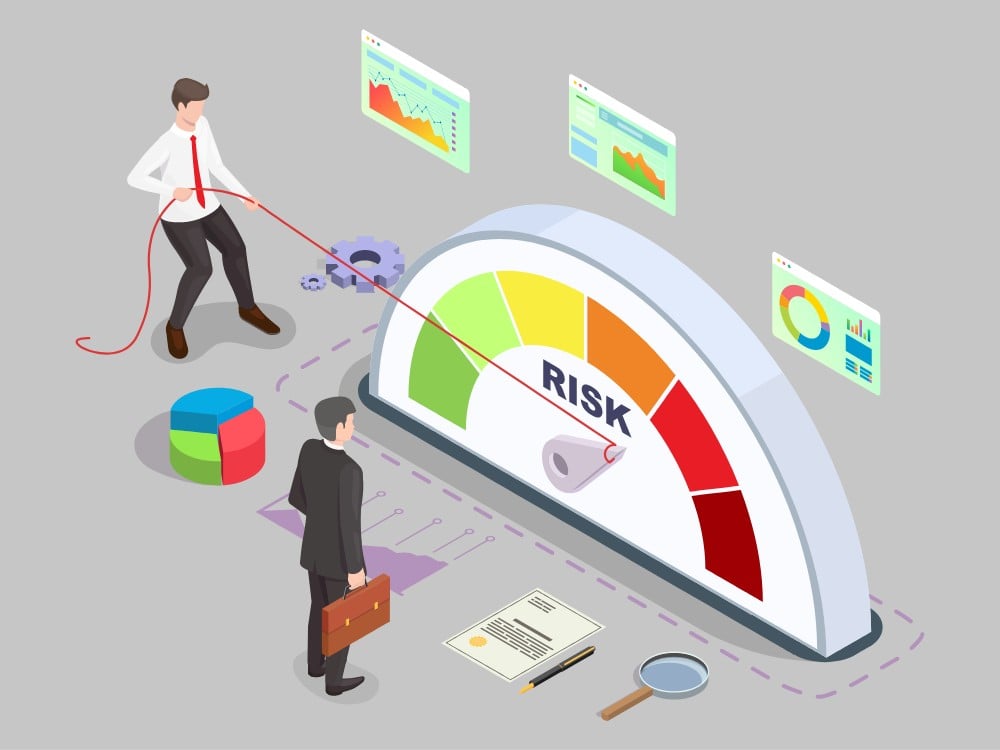
Risk is inherent and inevitable in a business. Knowing how to identify and successfully deal with these risks is an essential aspect of any ongoing business strategy. Risk, however, is a very broad term.
Business risks come in all shapes and sizes. Some risks have the potential to jeopardise the very existence of the business, while others may be less severe but still expensive and time-consuming to fix. Other risks, upon proper investigation, may not even be a danger after all.
All of this is why business risk management, being able to identify, manage and mitigate business risks, is so important.
Types of business risk
Business risks fall into different categories, which cover the entire business operation. They include the financial position of the business, the people who make up your business, the premises and technology it uses, and external factors such as market changes, economic recession, and, of course, a pandemic.
Financial risks for a business
Businesses need money to operate, survive, and ultimately grow. Financial risks are therefore some of the most obvious risks to look out for and manage.
Types of financial risk for a business include:
- Liquidity risk: When payment or debt obligations cannot be met quickly enough, this can result in financial losses.
- Credit risk: When credit is extended to customers or clients, there is a risk that they won’t pay on time (or, perhaps, at all). This can have a damaging impact on revenue and cash flow.
- Market risk: Market factors can create many different risks, including interest rate changes and unfavourable foreign exchange rates.
- Compliance/Legal risks: In a regulated sector, such as financial services, non-compliance with the rules and regulations of the sector can be costly. Fines and other penalties can be issued by regulatory bodies to businesses found to be non-compliant. Furthermore, legal risks can arise if disputes are raised between the business and third parties or employees.
Other risks to a business
There are other risks to a business that do not directly involve its financial position but still have the potential to be very costly if not properly managed. These include the following:
- Strategic risks: This is similar to market risk and can occur when the strategic direction of a business is not adequate to overcome challenges created by a changing business environment. One such strategic risk is failing to diversify income; another is failing to keep up with evolving customer demands.
- Operational risks: This can include any problems or losses caused by ineffectual internal processes, policies, or systems within a business. These risks include:
- Product defects or bad service
- Fraud or other criminal activity
- IT or system failures
- Premises damage
- Risks to personnel: There are a variety of risks that can come from hazardous objects or materials in the workplace. This could be cleaning chemicals or heavy machinery, or standard office equipment that is not properly stored, installed, or operated.
- Environmental risks: Depending on your location, there are environmental hazards that could cause problems. These include extreme weather, flooding, earthquakes, and other natural hazards.
- Technology risks: As businesses become more hi-tech, the potential for technology-related risk grows too. Tech risks for a business include power outages, cyber security breaches, and server issues. All of these can cause great disruption and cost.
How to identify business risks
When it comes to identifying business risks, high-quality information is essential. Robust management reporting is the difference between getting caught out by unexpected risks and mitigating them long before they even pose a problem.
Good management reporting gives business decision-makers the most timely and relevant business data available so that they can anticipate change, set out contingency plans, and ultimately make better business decisions.
How to use Management Reporting for risk management
When reviewing the financial statements of a business, you can spot patterns and discrepancies relating to cash flow, your balance sheet and profit/loss. Business managers can fully understand the financial performance of the business, as well as their position within their market.
Management reporting can help answer questions like:
- Should the business expect a downturn in revenue?
- Are production costs likely to increase in the future?
- Is there sufficient cash to cover late invoice payments or other shortfalls?
- How might further increases in interest rates impact your cash flow?
- Is your market share shrinking vs your key competitors?
Management Reports bring this information together, adding all-important context and applying them to the goals and KPIs that have been set. Management Reporting can’t tell the future, but it can help decision-makers forecast and predict with confidence so that no risk comes as a surprise.
If your business would benefit from being able to identify and mitigate business risks better, speak to the Genus team at Shorts today.

Alicia Williams
I am the Director of the Genus team at Shorts, a chartered certified accountant and Xero specialist. I specialise in cloud-based accounting solutions, particularly Xero and add-on software, helping clients streamline processes and improve efficiency. As a Client FD, I work closely with businesses to give them a clear understanding of their current position and support their long-term planning and growth.
View my articles

